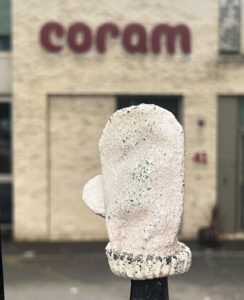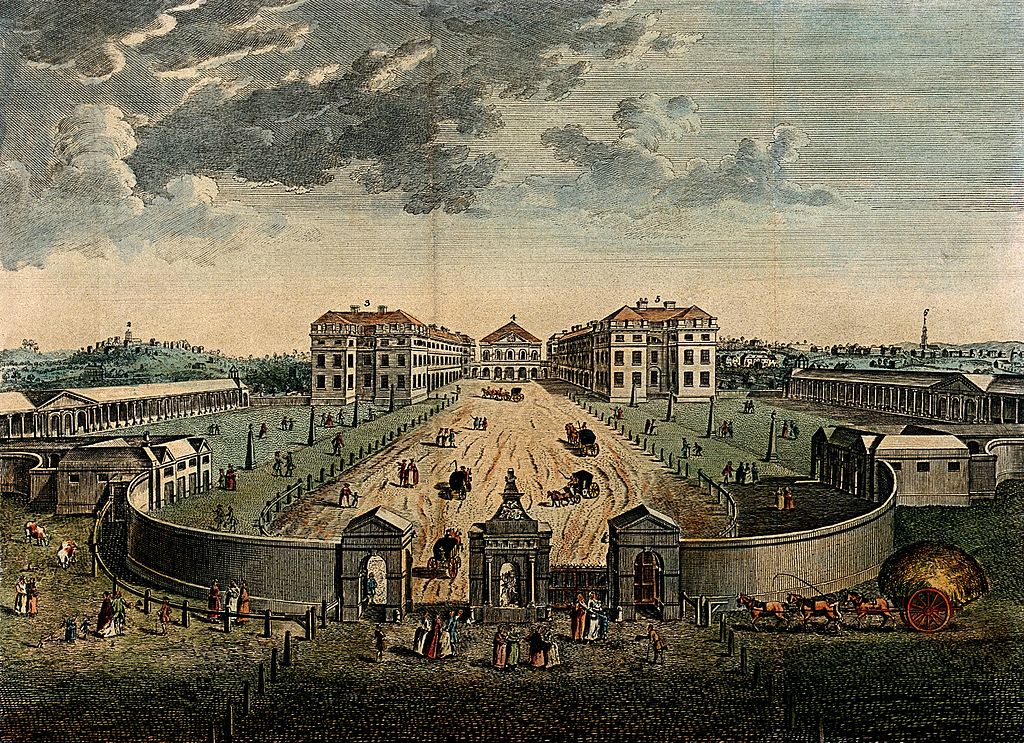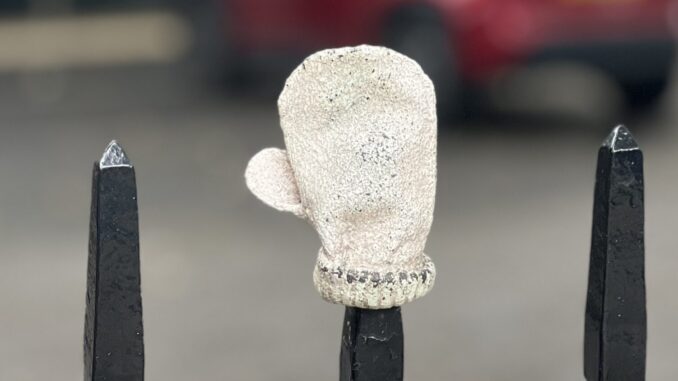
On the railings outside the Coram charity’s HQ in Bloomsbury is a white children’s mitten. Or, rather, what appears to be a child’s mitten, because this is actually a bronze sculpture by the artist Tracey Emin.
Called Baby Things: mitten, it was cast in 2010 as part of an exhibition at the Foundling Museum next door.
The museum houses the art collection from the Coram Hospital, which used to stand on this site, and which was one of the great philanthropic ventures of the 18th century, a home for ‘foundlings’, the abandoned and orphaned children of London.
The institution, and the present day charity, is named after Thomas Coram, a sailor and shipwright, who seems to have been a thoroughly wonderful human being, working and campaigning throughout his long life (1668-1751) for the benefit of others, without thought of gain for himself. (More here on his Wikipedia biography.)
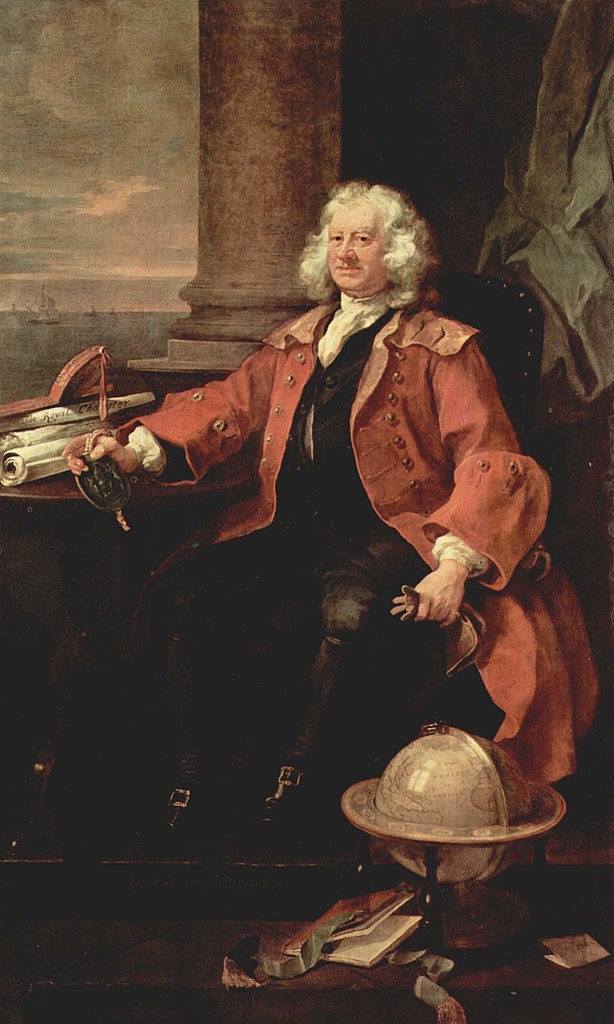
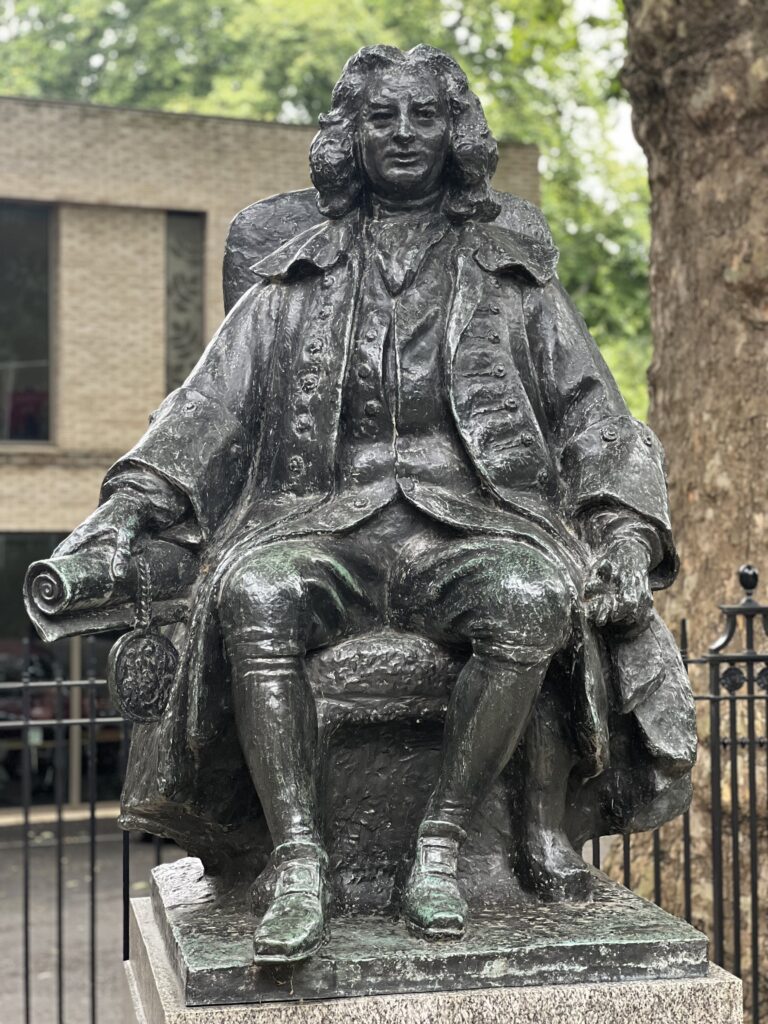
During his time in London in the early 1700s he was shocked by the sight of abandoned infants and babies in the street and began to campaign for the foundation of a hospital – essentially a children’s home – where they could be cared for.
It took many years for this campaign to come to fruition, but in 1739 George III issued a royal charter for the foundation of the Foundling Hospital, which was initally established in buildings in Hatton Garden in 1741. Land was then bought in Bloomsbury where a new building was constructed, the first children being admitted there in 1745.
Despite patronage from the great and the good, including the artist William Hogarth (who donated paintings) and the composer Handel (who gave charity concerts), demand for places always outstripped capacity to provide for the children. For example, in the years 1750-55, admission was sought for over 2,500 infants, but only 783 of these could be found places. (There was a lottery system, with mothers drawing balls from a bag to indicate acceptance, provisional admittance and rejection.) When a government grant was given in 1756 on the condition of ‘general admittance’ (no child refused), 4,000 children a year came into the hospital, which was almost beyond the charity’s ability to cope.
(The numbers indicate just how much demand there was, and remember, these are children being voluntarily given up by their mothers who are unable to provide for them. In many cases these mothers would leave tokens to identify their child in the hope of later being able to ‘claim’ them back if their situation improved. The Foundling Museum displays some of these tokens.)
The hospital is long gone, most of its buildings demolished and the site now the children’s playground of Coram’s Fields. The foundation is now Coram.org.uk a network of charities dedicated to the welfare of children. It is good and fitting that the name of Thomas Coram is still associated with such work almost 300 years after his endeavours to improve the life chances of some of the most vulnerable residents of Georgian London.
You can read more about the history of the hospital here.
And about the Foundling Museum and its collection here.

